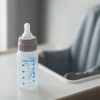The FDA has updated its infant formula compliance program for FDA investigators, laboratory analysts and compliance officers. The updates build on lessons learned over the last several years to elaborate on FDA’s approaches for inspections, sampling, laboratory analysis and imported infant formula products. For example, updates include instructions for annual environmental sampling of Cronobacter and Salmonella at powdered infant formula facilities and instruction for FDA notification should a sample test positive for Cronobacter or Salmonella, or if a sample is found to have nutrients that are above or below required levels per the agency’s infant formula regulation.
The compliance program also includes instructions for how product or environmental positives identified during records reviews should be immediately escalated to the appropriate subject matter expert within the Human Foods Program.
Additional background on the risks associated with Salmonella and Cronobacter in infant formula products, and the conditions that could lead to environmental contamination within the manufacturing facilities, are also included in the updated compliance program.
Inspectors are directed to perform environmental sampling once a year at each domestic powder infant formula manufacturing facility during annual or compliance follow-up inspection for both Cronobacter and Salmonella analysis if there are no significant adverse supply-chain implications.
The Division of Field Programs and Guidance (DFPG) and ORA Critical Foods Coordination Team will prioritize the annual inspection schedule based on:
- the facilities’ previous inspection results
- number of consumer complaints since the last inspection
- number of violative samples collected by FDA in the last twelve months
- the previous environmental sampling results performed by FDA
Per the instructions, environmental sampling should focus on zone two sites near potential product exposure points in the process (i.e., transfer points, fluid bed, sifters, rotary valves, man doors into drying system, filling lines, blending equipment, raw material handling equipment, etc.) including any areas indicating water accumulation. Additional sampling should also be done from zone three sites which may suggest a route of contamination (i.e., doorways, traffic routes, etc.) to dry production areas, finished product or food contact surfaces. Zone one sites should not be swabbed as these zones can be hard to reach and may introduce contamination during swabbing of a closed system. Unless conditions observed indicate a possible route of contamination, FDA does not recommend swabbing zone four areas at a high frequency.
Inspectors are advised to collect between 100-300 environmental swabs for Cronobacter spp. and 100-300 environmental swabs for Salmonella spp. at each firm, depending upon the size of the facility.






